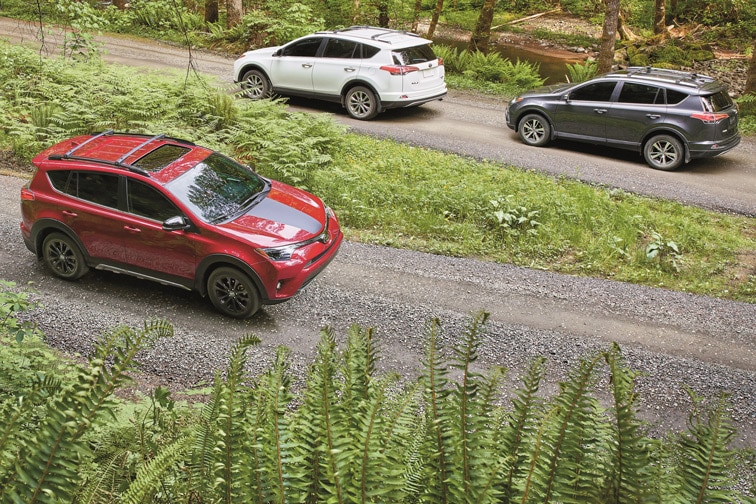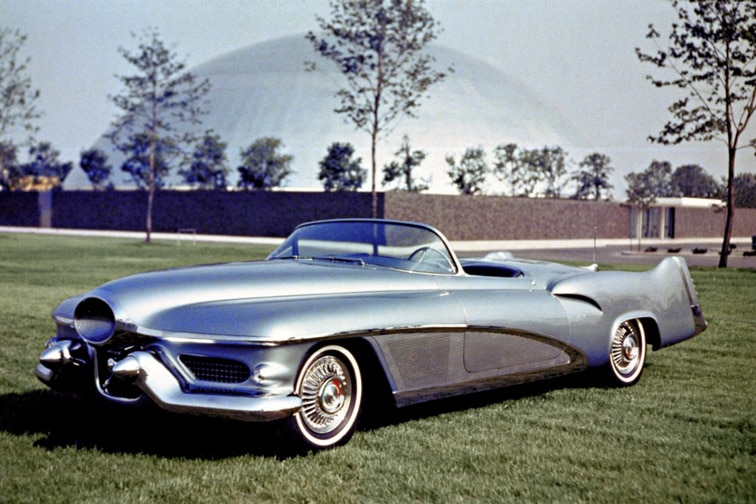Is the Sun Setting on the Sedan?
As SUVs and crossovers become the vehicle of choice, the faithful four-door seems to be fading into history.

When pay phones disappeared from our daily lives it wasn’t as if someone flipped a switch and they
Same goes for floppy disks and phone books, hand-crank windows and car keys. They were vital one decade, dust-covered relics the next.
Now, it appears the family sedan may be headed for a similar fate.
Sedan sales continue on a double-digit spiral, falling from 57% of the North American market in 2010 to just 31% in 2018, and crossovers are populating driveways and highways across America at a breakneck pace. By 2018,
For the auto industry, which has evolved steadily for more than a century—from the Model T to the Tesla Model 3—this sharp turn away from sedans cannot be dismissed as just a bump in the road.
“The industry has profoundly shifted,” said Jamie Butters, Chief Content Officer for Automotive News. “And this trend keeps building upon itself. Dealers are telling me they can’t sell [sedans]. People hear the headlines, and even though it’s going to take years to phase out some of these sedans, some people just assume they’re already gone.”
As manufacturers continue to cash in on the crossover craze and focus their efforts on developing the electric and autonomous vehicles of the future, is there any reason to think the once-mighty sedan won’t fade into obscurity, and go the way of pay phone?
Butters says he’s more optimistic than others.
“Sedans aren’t going to vanish. They’re not necessarily like the pay phone or a flip phone,” he said. “They’re more like the land line. They may not be that common. But sedans are durable and cost effective, and some people and businesses will still want that.”
 Toyota
Toyota
CROSSING OVER FROM CARS
The last time passenger cars had a distinct advantage over trucks and SUVs was in 2008: Average U.S. gas prices hovered around $3.50 to $4 a gallon, and the economy was reeling.
Sedans weren’t just the more affordable and fuel efficient option, SUVs were still being built primarily on truck platforms. They seemed too rugged or unrefined for the average family driver.
Over the next decade, the economy improved slowly but steadily. Gas prices leveled off around $2.50 per gallon. Most importantly, crossovers began to be built on car platforms, incorporating the traits people loved about their sedans, a smoother ride and better mpgs, to go along with taller seating, more space and flexible storage, higher ground clearance and better visibility.
It was a potent combination, and car buyers who craved the utility of a truck went wild for compact SUVs.
Toyota’s RAV4, the first official crossover introduced in the U.S. in 1995, was No. 4 in overall sales in 2018, followed by Nissan’s Rogue (No. 5) and the Honda CR-V (No. 6). The three top-selling vehicles were all trucks, which points to the larger trend in auto tastes: Buyers want bigger rigs—something that can haul their kids, groceries, bikes, paddleboards and home improvement projects, all while providing the creature comforts of a four-door sedan.
Trucks and SUVs today are stronger, faster and more fuel efficient than ever. Most pickups are just as likely to have heated seats and giant touch screens as any luxury car, which is why consumers can expect the enhancements to keep coming for their chosen vehicles. Ford, for example,
Manufacturers aren’t necessarily bemoaning the shift in consumer tastes.
Those higher profit margins have also helped accelerate the sedan's demise. There’s simply less incentive for manufacturers to spend billions perfecting a sedan when crossovers are more popular and profitable.
“The underlying reality is that SUVs and crossovers are a much healthier business for manufacturers,” said Butters. “A lot of (automakers) have lost money on cars in recent years, and when they see the pressure to invest in the future, they need to save money somewhere. That’s why some manufacturers will continue to cut cars from their lineup.”
SILVER LININGS FOR SEDAN FANS
Before we put the finishing touches on the eulogy for the faithful four-door, it’s worth noting that several manufacturers have said they have no intention of abandoning their stalwart sedans. Even among Detroit’s Big Three, the strongest cars will survive. Ford isn’t putting the mighty Mustang out to pasture. And at least one automaker has suggested they will be back in vogue before we know it.
Here are a few reasons to believe the sedan has more staying power than expected.
- Some sedans are still very popular and profitable. In 2018, Toyota sold 343,439 Camrys, and Honda sold 325,760 Civics. Both totals were down more than 10% from 2017, but those are still big numbers. Many automakers produce and sell enough sedans to keep entire factories running. Toyota, Honda, BMW, Mercedes—they are not abandoning sedans any time soon. “I feel confident that I’m going to go to my grave, and Toyota will still be making Camrys,” said Butters, who added that he’s 49 and in excellent health.
- Economic conditions change, and cars are more affordable: Sedans may not be the sexiest choice at the moment, but they continue to be the most cost-effective vehicles to own and operate. If fuel prices or interest rates rise significantly, consumers will likely rediscover their love of affordable cars.
- The auto industry is global: If manufacturers were just interested in pleasing U.S. customers, sedans might not stand a chance. In more price-sensitive countries, however, a $1,000 difference between a crossover and a sedan is still a game-changer. Smaller cars are also more practical in crowded international cities, where parking and road space is at a premium.
- The hottest car right now is a sedan: Nobody is rejecting the
because it doesn’t look like an SUV. Nearly 140,000 of Elon Musk’s more moderately priced electric vehicles were sold in 2018. Meanwhile, is the automaker’s only real flop. As the market is flooded with crossovers, truly distinctive sedans still have an opportunity to capture car buyers’ attention. - Soon enough, sedans will have retro appeal: Nissan has done long-term research that suggests the next generation of car buyers
, according to Michael Bunce, Nissan’s North American VP of product planning. “A generation of kids grew up in crossovers and SUVs," Bunce told Automotive News. "They might not even know what a sedan is. We show them silhouettes of vehicle bodies with no identification and they point to the crossover and say, 'That's my parents' car.' And then they point to the sedan and say, 'I like that one.'"
And the most important silver lining for sedan fans:
Savvy shoppers should be able to find some great deals on sedans: The longer SUVs and trucks are in the spotlight, the better your bargaining power for sedans. Even if you buy one of the sedans that’s being discontinued, such as the Ford Focus or the Chevy Cruze,
 GM
GM
IS THERE A FUTURE FOR THE FOUR-DOOR PASSENGER CAR?
The prospect of traveling U.S. highways and only seeing one sedan for every 20 SUVs and trucks seems almost unfathomable. But for an industry that has been in a state of perpetual flux for more than 100 years, that sort of sea change is only natural.
When Ford’s Model T began rolling off the assembly line in the early 1900s, it had a lot more in common with today’s SUVs than sedans. The passenger compartment was large and relatively high off the ground. The roof line was high, too. It was focused on function and utility, not aesthetics.
A decade or so later,
Not until recently has the sedan seemed so vulnerable.
Crossover mania is taking hold in Europe and
With automakers locked in a race to develop the car of the future—electric, autonomous or otherwise—they can’t afford to spend time trying to save a vehicle style from the past. They will continue to mass produce SUVs and crossovers for the same reasons movie studios keep churning out superhero franchises: it’s what their customers want, and they make more money.
“The auto industry used to be more about ego. It was core to GM’s identity to be the largest automaker.” said Automotive News’ Butters. “But over time they saw financially they couldn’t keep going with brands like Oldsmobile and Pontiac. If a segment isn’t paying off, they have no real need to stay in it. Today, it’s more about efficiency than ego.”
There is one glimmer of hope, though, for the once-proud sedan: Cars get revived all the time. BMW resurrected its once-beloved 8 Series. Toyota just brought back the Supra.
So even if the sun is setting on the sedan right now, there’s a good chance it will rise again.
Written by humans.
Edited by humans.
 Rick Press
Rick PressAfter a long career as an editor for a major metropolitan newspaper and website, in 2017 I joined Capital One as its Managing Editor for Auto Content. I’ve been fortunate to cover everything from breaking news and Super Bowls to CEOs and celebrities, and now I am excited to explore the connection we all have to our cars and help consumers navigate the car-buying journey. Let’s ride!
Related articles
View more related articles